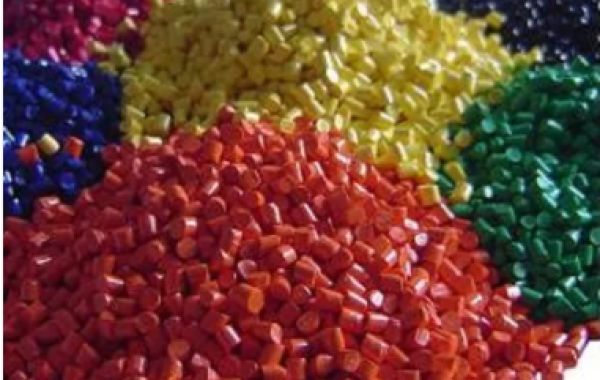The Carrier Resin Should Be Chemically Compatible With The Base Resin.
The carrier resin of the masterbatch and the base resin of the product should be selected from the same type of polymer under conventional circumstances, with the purpose of ensuring that the carrier resin is chemically compatible with the base resin. For example: copolymer POM resin can be used as carrier resin on homopolymer POM resin, SAN resin can be used as carrier resin for ABS matrix (but not GPPS, HIPS), PA6 can be used as carrier resin for PA66, PA46 matrix coloring. The reason is that the melting point of PA6 is lower, with the natural compatibility of nylon, can ensure good mixing and dispersion. In addition, for a certain plastic alloy, one of the two polymers in the alloy can be used as the carrier resin for the color masterbatch.
The amount of color masterbatch added to the resin is generally 2~5%. The content of the carrier resin is calculated to be at least about 1 to 3% of the base resin. This makes it the largest additive in the additive family, so it is important to pay attention to the details of the carrier resin when determining it. Using an incompatible resin as a carrier in the masterbatch manufacturing process is essentially a deliberate introduction of impurities or contaminants. Imagine an injection molding plant finding PE pellets in a barrel of ABS or PS or PBT, they would either discard it or pick out the PE trash. However, many people are concerned about how to meet the manufacturer's color specifications at the lowest cost. Some of the options include adding more fillers, using cheap pigments or even recycled materials. The most common is to use inexpensive polymers such as PE or vinyl copolymers such as LLDPE, POE, EVA.
There Is No "Universal, One-Size-Fits-All" Carrier Resin.
There is no "universal, one-size-fits-all" carrier resin. Suppliers who offer so-called "universal, all-purpose" blends also add these incompatible materials to their own products. A trader who supplies mainly nylon 66 resins will use PA6 as a carrier in some blends, but will mostly use EVA, which is known to the industry to thermally degrade the ethylene vinyl acetate in EVA at normal processing temperatures of PA66, causing screw wear and poor product appearance, especially at the gate and fusion line.
Many engineering plastics, such as PC and POM, are adversely affected by the use of incompatible carrier resin masterbatches. A spinning machine cam is made of PC or POM base material, some products have no problem with color appearance and part running, while others have a tendency to slowly release outward from the cam and break up destructively after a few runs, and will naturally break up after serious assembly without running. This difference in performance is not the colorant but the carrier resin in the color masterbatch, and when corrected this process and phenomenon disappears.
Attention To The Size Of The Molecular Weight Of The Carrier Resin Is The Second Principle.
Having established that the carrier resin and the base resin are compatible, paying attention to the size of the molecular weight of the carrier resin is the second principle. It is generally expressed in terms of melt index (MFR) on plastic raw materials. Since the addition of masterbatch in the base resin is limited to a small amount of 2-5%, the masterbatch is required to soften, melt and flow before the base resin in the blend to promote the mixing of the two, and the masterbatch formulation is designed to select a resin with a higher melt index (MFR) than the colored resin as the carrier. For example, if the MFR of the PC resin to be colored is known to be 10 g/min, a masterbatch with an MFR of 15-25 g/min can be used. This way of thinking often leads to extremes - more harm than good. The link between MFR and molecular weight cannot be ignored at any time, as it is the molecular weight that determines the performance of the resin in the final analysis. The high melt finger (MFR) carrier resin, on the other hand, can cause a decrease in product performance in the final molding part.
Also for a spinning machine PC cam parts, some PC cams showed cracks on their surface after a few months of assembly. When testing the MFR of the base resin and the molded cam parts, the difference between the two showed clear signs of degradation occurring in the PC parts. In this regard, we did melt index and other performance tests with blank PC resin parts and masterbatch colored PC in three groups of samples, and the MFR of the second group only increased by 20% compared to the blank group, and it showed good processing performance. The third group, which had a 50% increase in MFR, was considered to have undergone polymer degradation during the processing stage, and although the finished product looked good and performed about as expected at first, its average service life would be shorter in the service environment. The test results prove that the problem is not the processing but the masterbatch. The MFR of the white PC masterbatch tested alone was 88g/10min, while the MFR of another white masterbatch was 147g/10min. This method of reducing molecular weight to improve flow mixing actually became a bleed contamination against the base resin.








